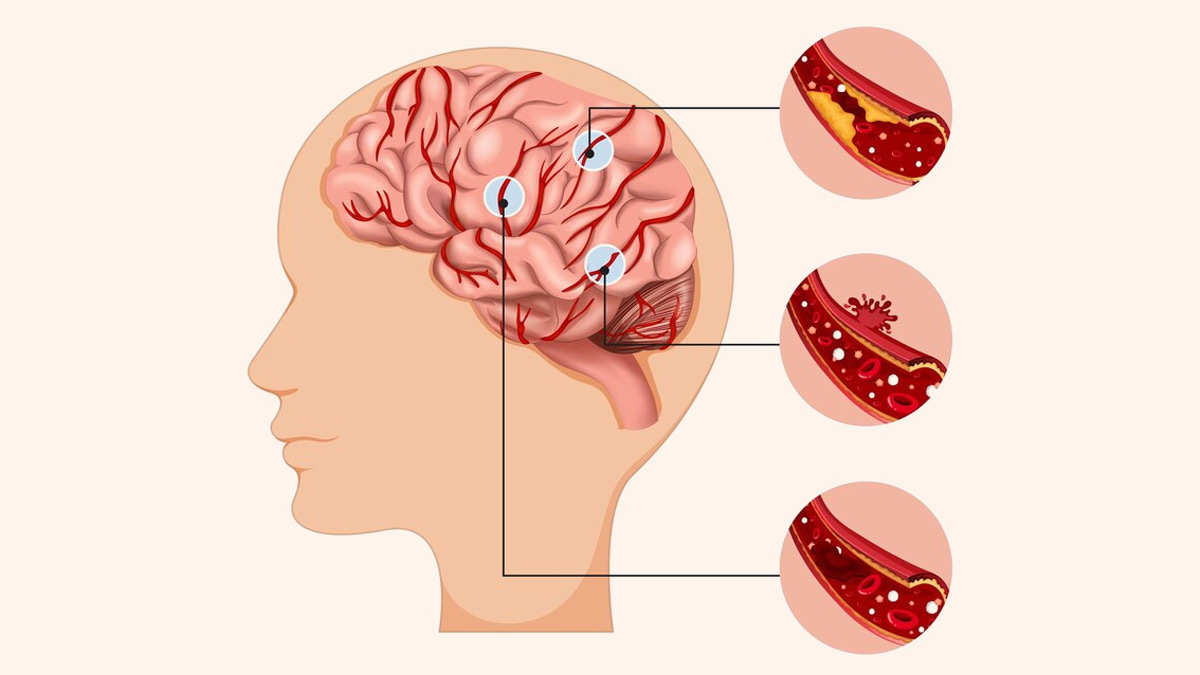
Did you know that the brain requires around 20% of the body's blood flow to function? A medical disorder called stroke (brain / paralytic attack) can occur when a portion of the brain dies from a lack of blood flow. A person may lose their ability to move one side of their body, speak, see, and/or move their other side depending on which area of the brain is affected. We spoke to our expert Dr Shahyan Mohsin Siddiqui, Consultant Neuro and Interventional Radiologist, Yashoda Hospitals, Hyderabad, who explained stroke, its signs, types, prevention, and treatment.
Table of Content:-
Dr Siddiqui said, “Stroke damage results in significant physical disability, communication impairment, loss of employment and income, and a general decline in quality of life, all of which place a heavy load on carers.”
As per the World Stroke Organization, 1 in 4 adults over 25 will have a stroke in their lifetime and six and a half million people die from stroke annually.

Are There Different Kinds Of Strokes?
Dr Siddiqui explained, “There are two kinds of stroke, haemorrhagic and ischemic. A haemorrhagic stroke happens when weak blood arteries burst, causing blood to pour into the brain (brain haemorrhage). When a clot interrupts or obstructs the blood supply to the brain, an ischemic stroke happens. It is responsible for around 80% of all strokes.”
Warning Signs Of Stroke

Dr. Siddiqui suggested remembering stroke signs as B-E-F-A-S-T:
- B (loss of Balance)
- E ( having trouble seeing by one or both eyes)
- F (Drooping of Face to one side when smiling)
- A (inability to move /drifting of Arms when raised)
- S (Speech trouble, difficulty speaking words)
- T (If a person shows any of these signs, it's Time to go to the hospital immediately)
Also Read: World Brain Day 2023: Impact Of Stroke And Medical Advancements In Treatment
Things You Must Not Do To Someone Experiencing Stroke
- You should not allow the person to drive to the hospital
- Do not give any medication, including aspirin to the patient
- Refrain from offering the person anything to eat
Can Stroke Be Prevented?
Dr Sididiqui said that nearly 90% of strokes are preventable. He listed the following measures to keep in mind:
- Maintaining a physically healthy lifestyle
- Keeping blood pressure and diabetes under control
- Avoiding smoking and alcohol
- Furthermore, the management of underlying cardiac rhythm abnormalities (atrial fibrillation) and carotid stenosis, a narrowing of the neck blood vessels, also considerably lower the risk of another stroke.
Also Read: From Fact To Fiction: Expert Debunks Myths About Stroke
What Is The Treatment For Stroke?

Dr Siddiqui suggested rushing to the nearest Comprehensive Stroke Centre when you notice signs of stroke. He said, “After a quick clinical examination, the patient undergoes a Computed Tomography (CT) scan of the brain to identify the affected parts of the brain and the blocked blood vessel. Patients are put on IV clot-busting drugs by a neurologist if they reach the hospital within 4.5 hours of symptom onset.”
Dr Siddiqui added, “For patients presenting over 4.5 hours (nearly 85% of patients fall into this category) and those with large clots, a revolutionary treatment called mechanical thrombectomy can be offered, even up to 24 hours from onset. However, it's essential to understand that the delay in treatment reduces the chances of a good outcome following mechanical thrombectomy by 10% for every 15-minute delay.”
What Is A Mechanical Thrombectomy Procedure?
Dr Siddiqui explained, “Mechanical thrombectomy is now considered the primary treatment approach for acute ischemic strokes caused by the blockage of major brain blood vessels within the first 24 hours from symptom onset. This less invasive procedure is conducted within the catheterization laboratory, with the assistance of real-time imaging guidance.”
He added, “A small pinhole is made in the groin, and tiny wires and tubes called catheters are navigated to the blocked blood vessel, where the clot is removed, and blood flow to the brain is re-established. This delicate and technically challenging procedure is performed by a trained specialist called an Interventional Neuroradiologist/Neuroendovascular Radiologist.
Following this procedure, up to 70% of patients experience a good functional outcome, with the majority achieving near-complete recovery of their paralysis and other stroke symptoms, sometimes even immediately at the end of the procedure. Although this treatment can be offered for up to 24 hours, a delay in opening the blocked vessel significantly reduces the chances of a good outcome from treatment, emphasising the critical importance of time.
[Disclaimer: The information in this article is shared by a registered healthcare professional and is for informational purposes only. Hence, we advise you to visit a hospital if you notice any signs of stroke.]
Also watch this video
How we keep this article up to date:
We work with experts and keep a close eye on the latest in health and wellness. Whenever there is a new research or helpful information, we update our articles with accurate and useful advice.
Current Version